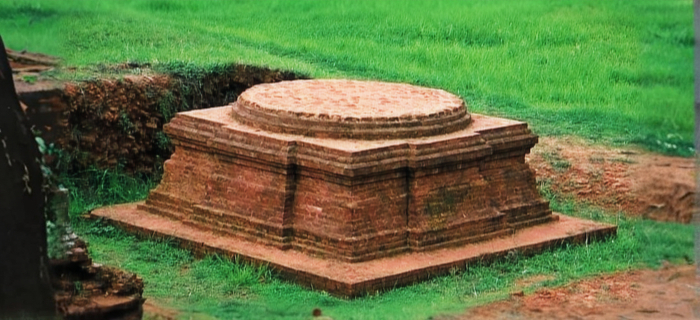The Lalmai Moinamati Group of Monuments is an important archaeological site located in the Comilla district of Bangladesh. The site provides exciting insights into the long and rich history of Buddhism, reflecting that the region has been a part of South Asian cultural and religious exchanges for over millennia. What sets this site apart is its unique combination of Buddhist monasteries, stupas, and temples, which were scattered across the hilly landscape from the 7th to 12th centuries, making it a must-visit for history enthusiasts, tourists, and archaeology buffs.
Despite the unfortunate loss of many temples and monasteries to terracotta-hunting peasants, several notable sites remain intact, providing a wealth of information about the lifestyle of Buddhist monks and the structure of their communities in ancient Bengal. These sites offer a comprehensive understanding of the past, enriching our knowledge of this fascinating period.
Historical Background The Lalmai Moinamati Group of Monuments
The names of the monuments are derived from the names Lalmai Hills and Moinamati Hills, where the ruins are located. The period corresponding to the activity of these temples and monasteries shaped the region as an epicenter of Buddhism to a considerable extent. Archeologists argue that the area was under the control of the Chandra and Deva dynasties, which ruled in southeastern Bengal. Hill monasteries were the thriving centers of Buddhist monks who not only practiced their religion there but also were engaged in academic historiography. Philosophy, astronomy, medicine, and even theology were the focus of monastic life. The discovered ruins reflect a profound relationship and knowledge exchange between ancient Bengal and different parts of the world that were practicing the same religion, including India, Nepal, and Southeast Asia.
Key Sites to Visit
Among the Lalmai Moinamati group, several specific sites stand out due to their archaeological importance and the stories they tell about ancient Bengal.
1. Salban Vihara: One of the most well-known and excavated sites, Salban Vihara was once a large Buddhist monastery. Its square design, with a central shrine and surrounding monastic cells, suggests a structured and well-organized community of monks who resided there. The discovery of terracotta plaques, bronze statues, and stone inscriptions provides rich details about life in the monastery and its religious practices.
2. Kutila Mura: Another significant site, Kutila Mura, is known for its stupas, which were built to house relics of the Buddha and prominent Buddhist monks. The unique architectural design of the stupas, combined with its scenic location, offers visitors a peaceful and reflective environment. The stupas symbolize the spread of Buddhist thought in ancient Bengal and its connection to other Buddhist regions.
3. Ananda Vihara: This monastery complex, though less excavated, is another crucial site in the Lalmai Moinamati area. Its ruins hint at an elaborate structure that once housed monks and served as a center for Buddhist learning. Inscriptions found here have helped researchers piece together details about the monastery's function and its place in the broader context of Bengal's Buddhist past.
The Archaeological Value
The excavation of the area started in the mid-20th century and progressed to this day. The art pieces found by the archaeologists include terracotta plaques depicting scenes from the Buddha's life, bronze sculptures of Bodhisattvas, and stone carvings with intricate inscriptions. All of them, while different in their purpose and production technology, are also similar in many ways. While some clearly demonstrate the artistic potential of the ancient Brandon, others sport elements and a style traceable to other works and buildings made in other parts of the Buddha's realm.
In other words, the area's art appears to be a conglomerate, similar to Bengal's history and circumstances. In addition, coins and other excavation findings help trace the region's economic and political history by discovering the realm's connections with unfamiliar places in the far West.
In fine, the Lalmai Moinamati Group of Monuments is not just an archaeological site, but a place of profound religious and historical significance. It continues to be a place of reverence for pilgrims and a source of fascination for tourists. For history enthusiasts, a visit to these ruins is a journey into a lesser-known part of history, a chance to hear the echoes of the past in the present—a testament to the diverse and vibrant heritage of the land.



Comentarios